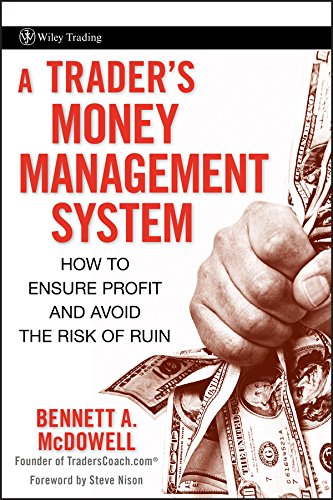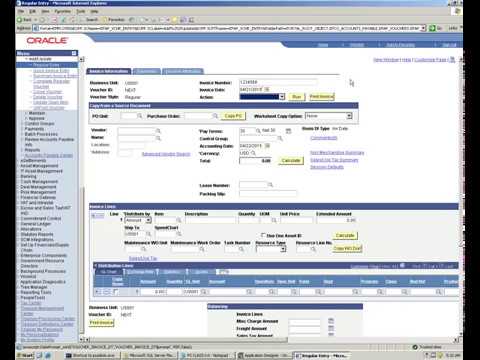
It is based on the idea prices can be predicted by analyzing past price movements and market data. Quantitative trading strategies are typically automated and are programmed into a computer that can execute trades without human intervention. The word “quant” is derived from quantitative, which essentially means working with numbers.
For this reason, it is important to pursue advanced study in statistics (namely Ph.D. coursework). A quant trader’s job is a continuous and rigorous process with long working hours. The more automation built in the overall market, the more efficiency is needed as profit opportunities thin out with every passing day. The risks of loss from investing in CFDs can be substantial and the value of your investments may fluctuate. 72% of retail client accounts lose money when trading CFDs, with this investment provider.
Quants have been trying to figure out the public’s reaction to various types of news articles and how it is going to affect the future trend. This strategy includes the use of a predetermined stock portfolio with minimal risk. They take into consideration the temporal dynamics of sequential data and take care of the large gradients.
Quant trading can be a profitable investment strategy, especially if you know how to analyze data and work with a large crypto portfolio. It’s a great way to manage your portfolio while eliminating emotions and human error. While https://1investing.in/ a trading bot can run independently, human oversight is still necessary. Quant traders can employ several trading approaches, but we’ll take a brief look at two in particular—high-frequency trading and momentum trading.
- However, their strategy can also take into account any other variable that can be reduced to a numerical value.
- In the long run, the Federal Reserve stepped in to help, and other banks and investment funds supported LTCM to prevent any further damage.
- When trade opportunities are spotted, traders can either put out orders manually or let the system handle them automatically.
- The primary difference is that algorithmic trading is able to automate trading decisions and executions.
- As a result, the amount of data that traders must evaluate to make trading decisions is more manageable in a systematic way.
Each decision tree is either a subset of data or a subset of the factors considered for modeling. Random Forest similar to CART regression trees can take care of common machine learning model issues. Looking at the mathematical formula of the trend one can understand the market at a deeper level. This way the algorithms’ hyperparameter can be scope of financial accounting tuned for maximum profits. These algorithms can be divided into two parts – Machine Learning algorithms and High-Frequency trading Arbitrage strategies. Quantitative investing is also widely practiced both as a stand-alone discipline and in conjunction with traditional qualitative analysis for both return enhancement and risk mitigation.
How to Start Quantitative Trading
Various risks are related to quantitative trading, including technology risks, brokerage risks, etc. Explore the range of markets you can trade – and learn how they work – with IG Academy’s free ’introducing the financial markets’ course. They have to sort through all the data collected to decide whether they have spotted a trend and to determine if there is a sell or buy point. Examples of arbitrage strategies include triangular arbitrage, statistical arbitrage, and convergence trading. Examples of trend strategies include trend following, moving average crossover, and momentum trading. However, if you’re strictly an algorithmic trading quant, you can expect to earn $145,000 yearly.

Certain aspects of statistics are the backbone of quantitative trading, including regression theory and time-series analysis. Electronic engineering techniques such as Fourier analysis and wavelet analysis are also utilized in quantitative analysis. Most of the statistics concepts you will need to understand to work in quant trading is so advanced that it is not taught at an undergraduate level.
The Best Quantitative Trading Books for Beginners
There are even off-the-shelf programs that are plug-and-play for those seeking simplicity. Quant models always work well when backtested, but their actual applications and success rate are debatable. While they seem to work well in bull markets, when markets go haywire, quant strategies are subjected to the same risks as any other strategy. Quantitative Trading is a field of trading systems that involves the use of algorithms, and complex mathematical formulations, to automate the trading (buy and sell) signals.
- In financial markets, quantitative trading is favored by financial institutions with the resources to run their proprietary trading software with dedicated support staff and data centers.
- Unlike traditional qualitative investment analysts, quants don’t visit companies, meet the management teams, or research the products the firms sell to identify a competitive edge.
- If the model is right, the discipline keeps the strategy working with lightning-speed computers to exploit inefficiencies in the markets based on quantitative data.
- A computerized quantitative analysis reveals specific patterns in the data.
- Beyond that, continued success requires constant innovation, comfort with risk and long working hours.
- Additionally, the cost of the trading systems and infrastructure to begin trading as a quant are high and capital-intensive.
By the 90s, algorithmic systems were becoming more common and hedge fund managers were beginning to embrace quant methodologies. The dotcom bubble proved to be a turning point, as these strategies proved less susceptible to the frenzied buying – and subsequent crash – of internet stocks. Several developments in the 70s and 80s helped quant become more mainstream. Algorithmic traders, often known as “algo traders,” use automated systems to evaluate chart patterns as well as open and close positions on their behalf.
Quantitative Trading
Mathematical models and computations are used to collect and analyze data with a rapid throughput rate on investment opportunities. Generally, systems created may range from entirely manually to fully automated. Moreover, the different programs and systems developed by different traders will compete to generate higher profits. Thus, traders will need to improve their trading systems persistently to remain competitive.
Mean reversion is a financial theory that posits that prices and returns have a long-term trend. By removing emotion from the selection and execution process, it also helps alleviate some of the human biases that can often affect trading. Instead of letting emotion dictate whether to keep a position open, quants can stick to data-backed decision making.

Another key component of risk management is in dealing with one’s own psychological profile. Although this is admittedly less problematic with algorithmic trading if the strategy is left alone! A common bias is that of loss aversion where a losing position will not be closed out due to the pain of having to realise a loss. Similarly, profits can be taken too early because the fear of losing an already gained profit can be too great. This manifests itself when traders put too much emphasis on recent events and not on the longer term.
Quantitative Trading: CNBC Explains
If it diverges up, the system will calculate the probability of a profitable short trade. Risk refers to anything that could interfere with the success of the strategy. One common issue with backtesting is identifying how much volatility a system will see as it generates returns. If a trader only looks at the annualised return from a strategy, they aren’t getting a complete picture. Let’s say, for example, that you hypothesise that the FTSE 100 is more likely to move in a certain direction at a particular point in the trading day.
Quantitative trading techniques are utilized extensively by certain hedge funds, high-frequency trading (HFT) firms, algorithmic trading platforms, and statistical arbitrage desks. These techniques may involve rapid-fire order execution and typically have short-term investment horizons. Quantitative analysis (QA) in finance is an approach that emphasizes mathematical and statistical analysis to help determine the value of a financial asset, such as a stock or option. Quantitative trading analysts (also known as “quants”) use a variety of data—including historical investment and stock market data—to develop trading algorithms and computer models.
Thus, it resolves the issue of an outlier (or a short-term change) in the time series data. Since these are high-frequency signals, these small profits add up to millions for investors. Backtesting Platforms are the platforms/software that helps backtest simple strategies, portfolio optimization, futures testing, etc. Quants are very different from qualitative analysts, in that they make decisions based primarily on mathematical equations and models.
Instead of relying on their expertise in the financial markets, quant traders (quants) are mathematicians through and through. Because quant trading requires a mastery of math, statistics, and programming, it is unlikely to be the case that one can simply read a few books and become adept. Rather, successful quants invest a great deal of time and money in formal education, industry credentialing, and self-study. Additionally, the cost of the trading systems and infrastructure to begin trading as a quant are high and capital-intensive. Quantitative traders take a trading technique and create a model of it using mathematics, and then they develop a computer program that applies the model to historical market data. If favorable results are achieved, the system is then implemented in real-time markets with real capital.
A trading algorithm consists of 3 parts – 1) the code to enter a trade 2) the code to close a trade and 3) the code to calculate how much to trade. Alternatively, we can run simulations to find the optimal betting size based on multiple potential outcomes of a trade. Let’s say a trade wins 50% of the time with a 15% return, loses 40% of the time with a 10% loss and loses 10% of the time with a 100% loss. In many cases, having knowledge of other specific domains is useful if we are trading products in those industries. IG International Limited is licensed to conduct investment business and digital asset business by the Bermuda Monetary Authority. Discover the range of markets and learn how they work – with IG Academy’s online course.
For quantitative trading to be implemented successfully in unstable markets, the planned trading strategy must be sufficiently flexible. Quant traders often only develop profitable short-term quant trading models for this reason. However, due to volatile crypto market conditions, the results from these short-term trading strategies are not always reliable, which can and often does lead to losses. Due to the high computing demands of quantitative trading, large financial institutions and hedge funds have typically used it. A recent CoinDesk article showed just how profitable quant trading has been for crypto hedge funds, particularly in 2018 and 2019.
Pricing knowledge may also be embedded in trading tools created with Java, .NET or VBA, and are often integrated with Excel. According to Bureau of Labor Statistics data, the median annual pay for financial analysts in 2022 was $95,080, while the highest 10% earned more than $169,940. However, in the field of quantitative analysis, it is not uncommon to find positions with posted salaries of $250,000 or more. As with most careers, the more experience you have, the higher a salary you can command.
Quants, for example, are pure mathematicians and don’t simply rely on their knowledge of the financial markets. However, their strategy can also take into account any other variable that can be reduced to a numerical value. For instance, some traders create tools to track investor sentiment on social media.
But you might also have a lot of questions about it and whether it’s right for you. As a result, successful quants can earn a great deal of money, especially if they are employed by a successful hedge fund or trading firm. Quantitative traders use quantitative tools, such as oscillators and moving averages, to create their own quantitative trading systems. There are other modern technologies, mathematics, and the availability of comprehensive databases that quantitative traders use to make rational trading decisions.
The use of quantitative trading strategies sometimes referred to as algorithmic trading, has become increasingly popular among traders and investors. Quantitative trading strategies rely on complex mathematical models and algorithms to analyze financial markets and identify trading opportunities. By automating the trading process, quantitative traceable to identify attractive trading opportunities and execute trades quickly and efficiently. Quantitative trading strategies have been employed successfully by many investors and traders. For instance, a 2019 article in the Wall Street Journal reported that quantitative trading strategy generated returners of about 15% annually over the past for fund managers’ care. A quantitative trader is a professional who uses quantitative analysis and mathematical models to develop and implement trading strategies.
ATPBot: The most powerful AI trading bot – The Cryptonomist
ATPBot: The most powerful AI trading bot.
Posted: Wed, 13 Sep 2023 10:58:45 GMT [source]
This information has been prepared by IG, a trading name of IG Markets Limited. In addition to the disclaimer below, the material on this page does not contain a record of our trading prices, or an offer of, or solicitation for, a transaction in any financial instrument. IG accepts no responsibility for any use that may be made of these comments and for any consequences that result. No representation or warranty is given as to the accuracy or completeness of this information. Any research provided does not have regard to the specific investment objectives, financial situation and needs of any specific person who may receive it. It has not been prepared in accordance with legal requirements designed to promote the independence of investment research and as such is considered to be a marketing communication.